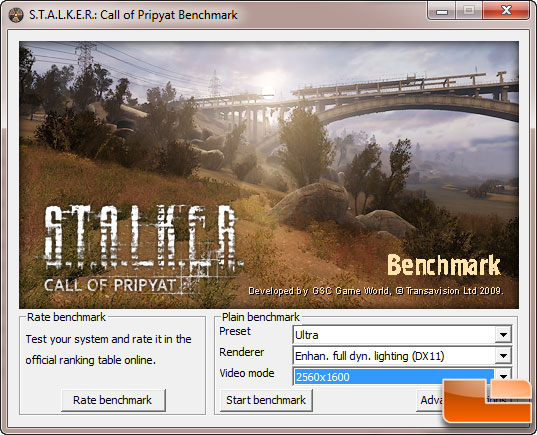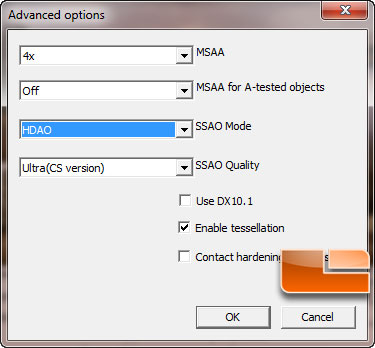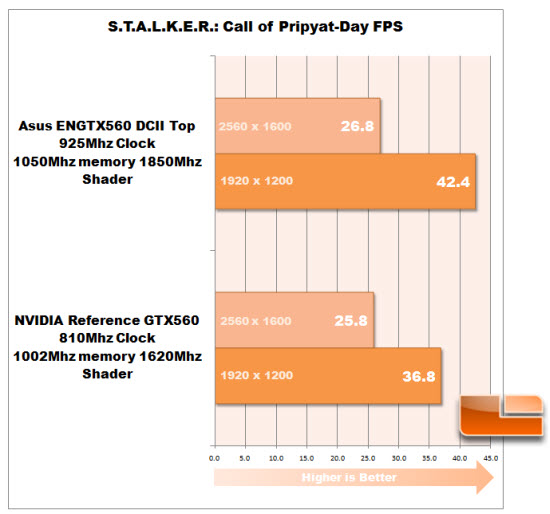ASUS GeForce GTX 560 DirectCU II TOP Video Card Review
S.T.A.L.K.E.R.: Call of Pripyat

The events of S.T.A.L.K.E.R.: Call of Pripyat unfold shortly after the end of S.T.A.L.K.E.R.: Shadow of Chernobyl following the ending in which Strelok destroys the C-Consciousness. Having discovered the open path to the Zone’s center, the government decides to stage a large-scale operation to take control of the Chernobyl nuclear plant.
S.T.A.L.K.E.R.: Call of Pripyat utilizes the XRAY 1.6 Engine, allowing advanced modern graphical features through the use of DirectX 11 to be fully integrated; one outstanding feature being the inclusion of real-time GPU tessellation. Regions and maps feature photo realistic scenes of the region it is made to represent. There is also extensive support for older versions of DirectX, meaning that Call of Pripyat is also compatible with older DirectX 8, 9, 10 and 10.1 graphics cards.

In order to make repeatable tests of our two test cards we chose to use the S.T.A.L.K.E.R.: CoP benchmark utility instead of the actual game. You can see we again used both the 2560 x 1600 and 1900 x 1200 resolutions for our test runs. We also selected Enhanced Full Dynamic Lighting “DX11” as our rendering solution.

Under the advanced settings we picked 4x MSAA and set our SSAO to HDAO and Ultra to really push these cards even though NVIDIA suggests using HBAO. HDAO forces the SSAO buffer to render at full resolution. You can see the lower resolution allows the ASUS version of the GTX 560 make a significant jump in performance.

Benchmark Results: ASUS GTX 560 DirectCU II TOP was 4% and 15% faster than the reference design.

Comments are closed.